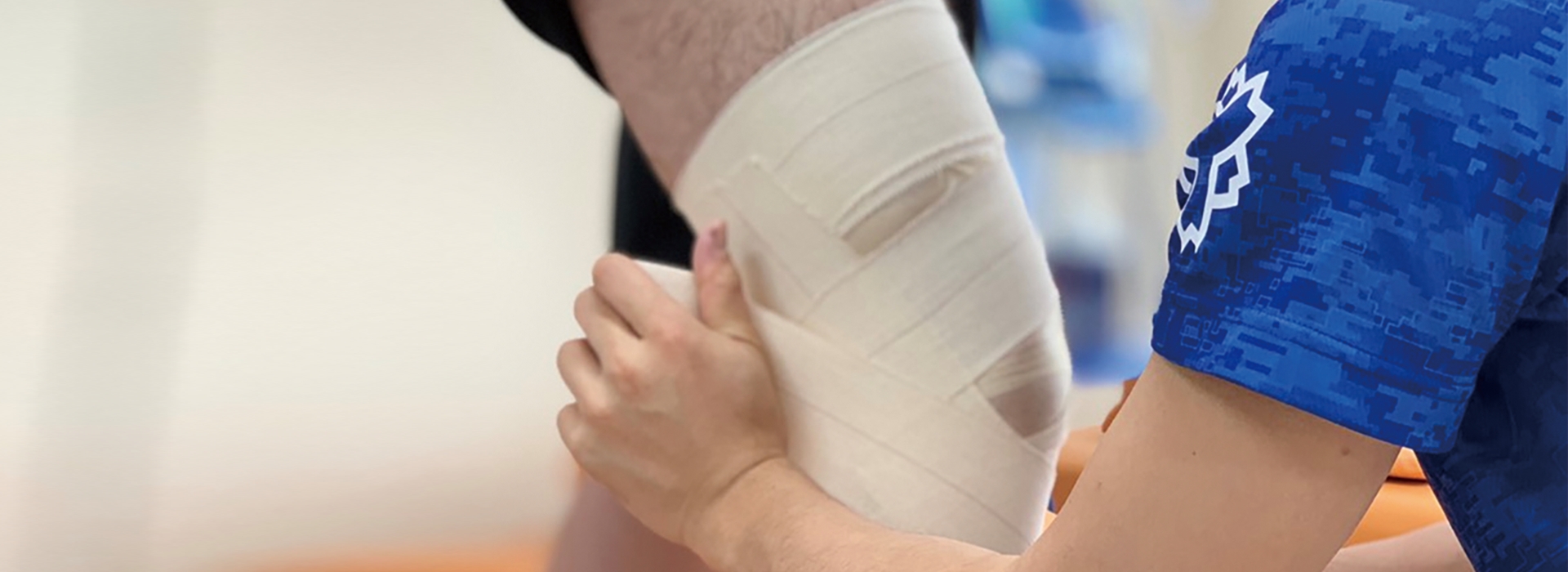
Department of Judo Therapy and Medical Science
Training students to become judo therapists that possess wide-ranging knowledge and practical skills along with ability to succeed in various fields.
The curriculum at the Department of Judo Therapy and Medical Science is designed for the students to learn the knowledge and skills necessary for becoming judo therapists that are healthcare professionals with a deep understanding of sports from various
perspectives, support sporting activities as medical practitioners, help maintain and promote people’s health, and treat and prevent sporting injuries. The curriculum also includes modules that are specifically dedicated to improving the students’ communication
skills such that they will be able to interact with various athletes and sport staff members and expand the realm of their professional activities globally, taking advantage of the unique academic resources available at NSSU.
| Curriculum duration: | Four years |
| Academic degree: | Bachelor (Judo Therapy and Medical Science) |
| Class size: | 90 students |
| Graduation requirement: | 133 credits at least |
Career paths and qualifications
Typical career paths
- Opening own judo therapy / bonesetter practice
- Employment with medical institutions
- Researcher at graduate schools, etc.
- Employment in the sports industry
- Work in the social service industry, etc.
Licenses and qualifications that may be obtained
- Judo therapist (eligibility for examination)
- Athletic trainer (eligibility for examination) *Limited slots available.
- Japan Association of Training Instructors-certified training instructor (eligibility for examination)
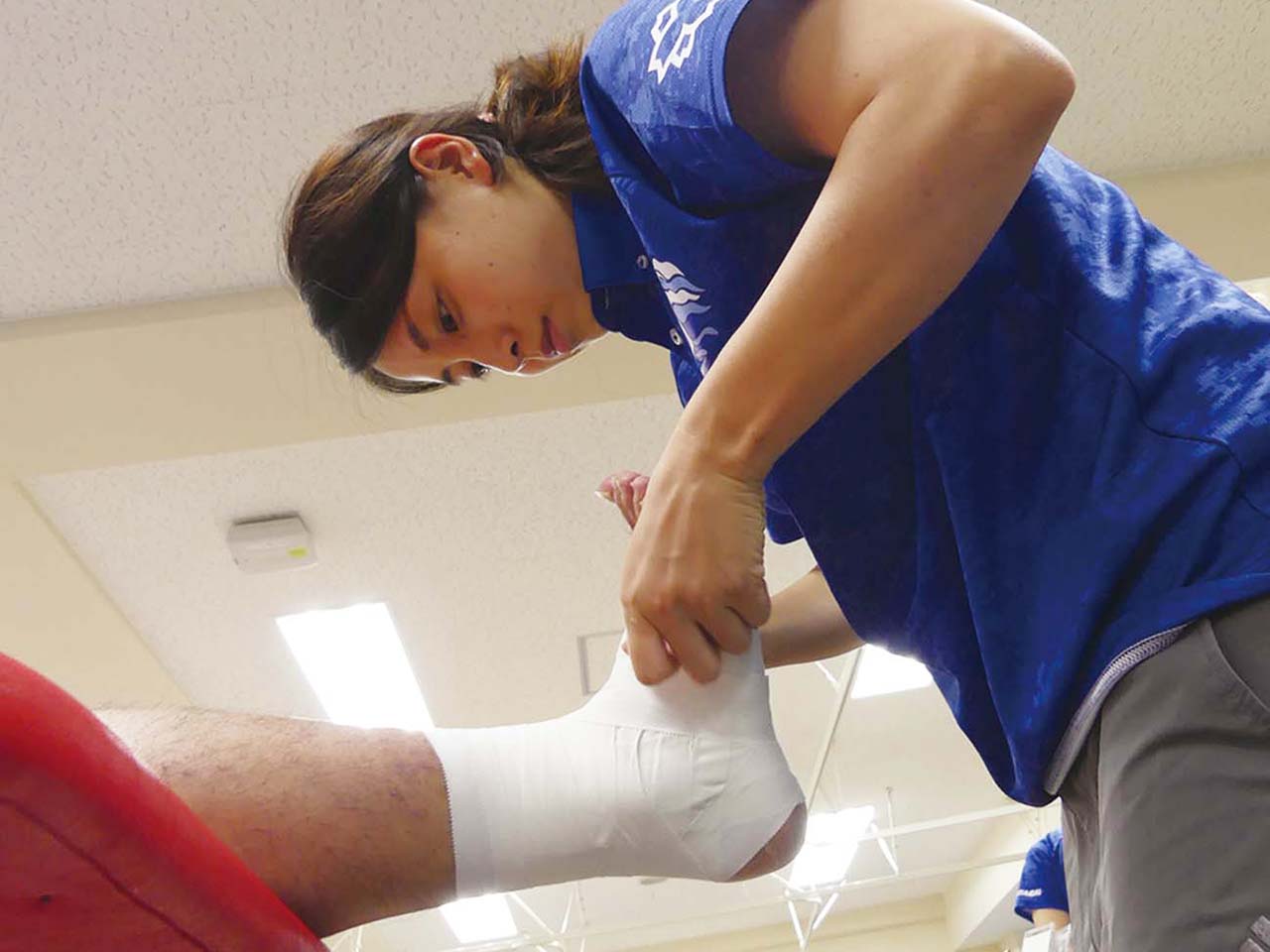
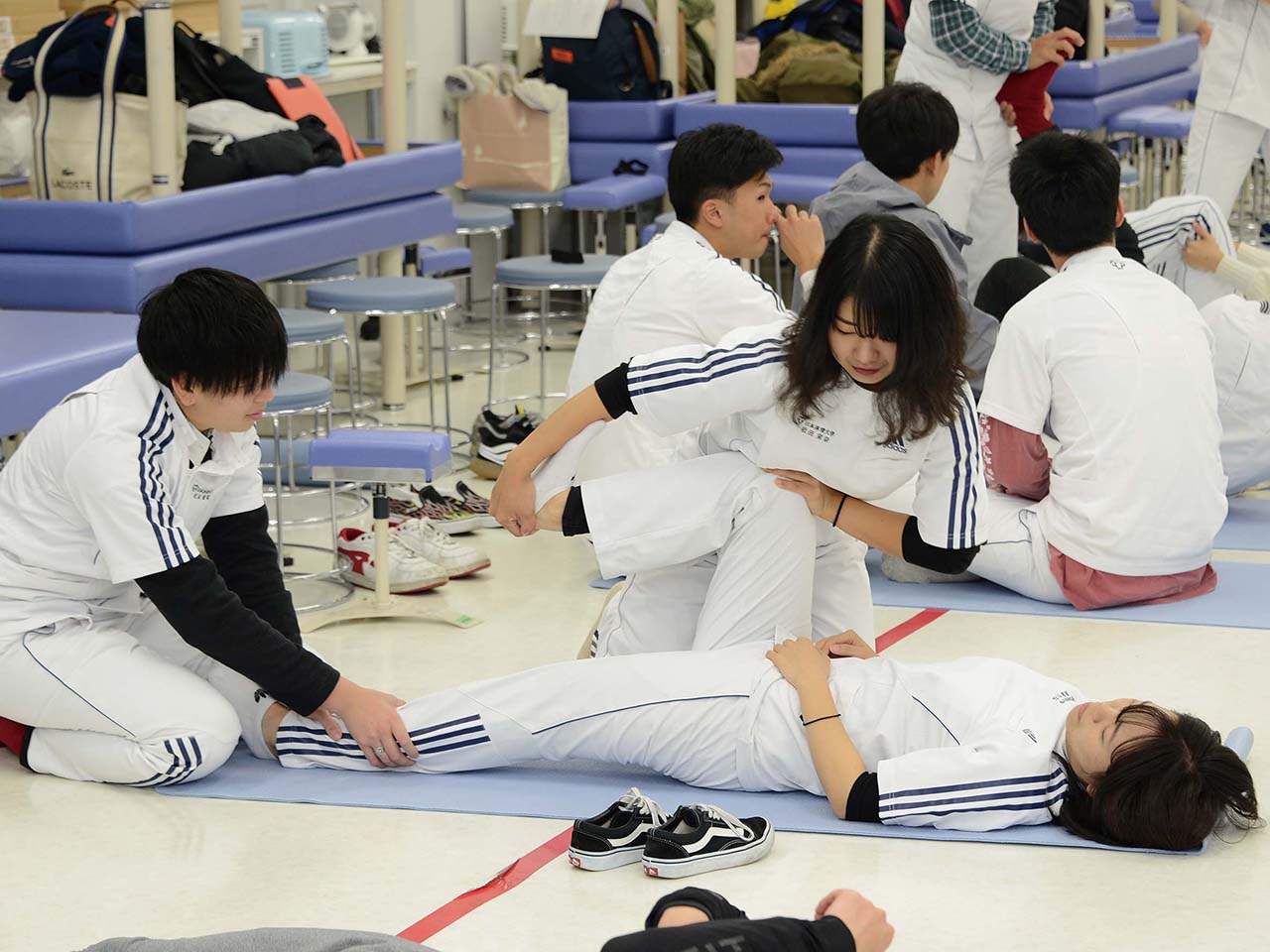
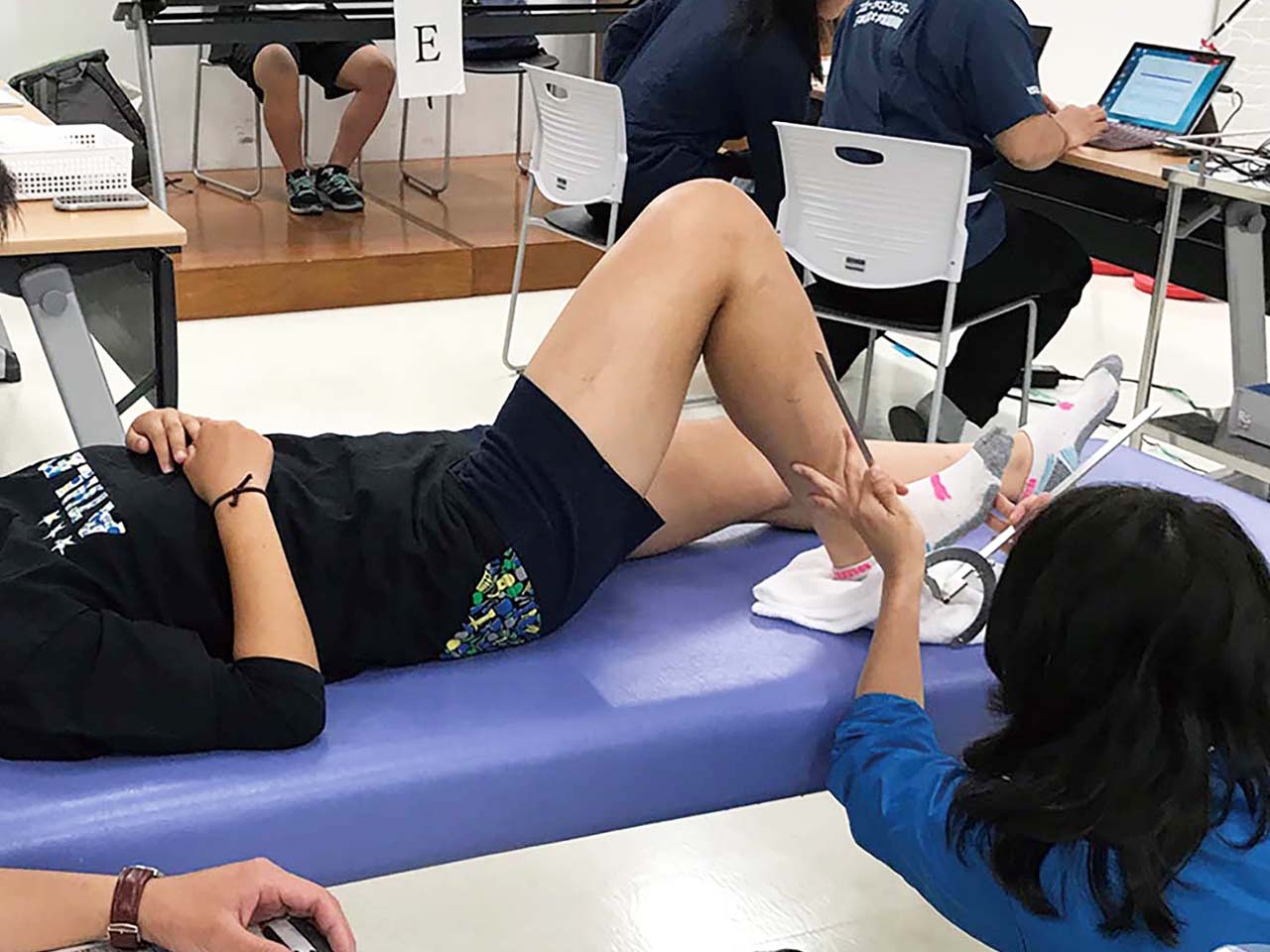
Key departmental features
Learn specialized knowledge and skills.
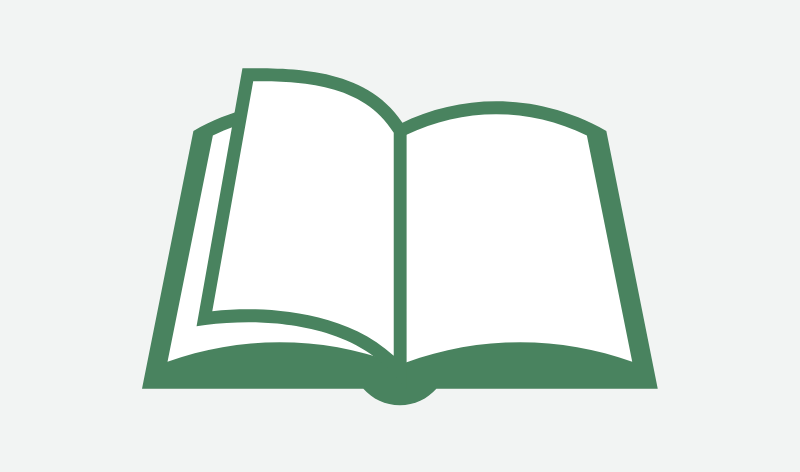 The Department’s curriculum includes courses for learning fundamental medical knowledge in the four key areas of sports science; human body structure and functions; diseases and injuries; and the principles of public health, medicine, welfare, and judo
therapy, as well as upper-level courses focusing solely on the study of judo therapy, such as basic judo therapy and clinical judo therapy. From it, the students can learn all the basics along with specialized knowledge and techniques in judo therapy
necessary to get into the profession.
The Department’s curriculum includes courses for learning fundamental medical knowledge in the four key areas of sports science; human body structure and functions; diseases and injuries; and the principles of public health, medicine, welfare, and judo
therapy, as well as upper-level courses focusing solely on the study of judo therapy, such as basic judo therapy and clinical judo therapy. From it, the students can learn all the basics along with specialized knowledge and techniques in judo therapy
necessary to get into the profession.
Acquire practical skills.
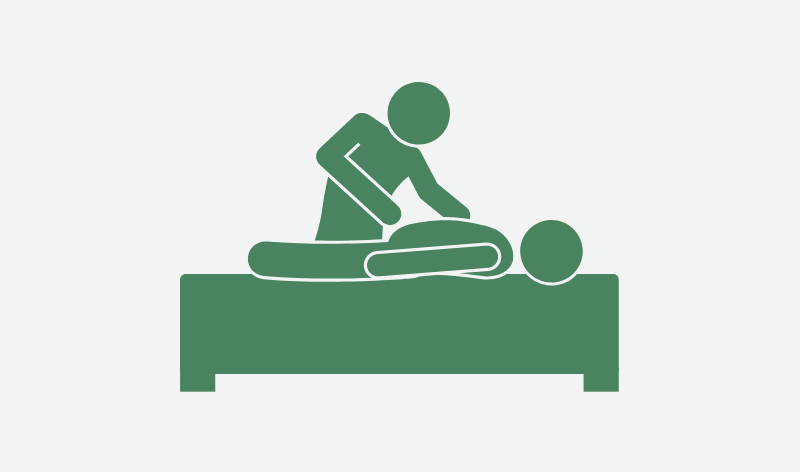 Judo therapy demonstration courses are first offered for the students to learn practical skills, and then they move onto the study of how to integrate and apply all previously learned knowledge and techniques taught comprehensive study courses such as
Comprehensive Judo Therapy Demonstration I and II and Graduation Research Projects. By completing these courses, the students gain all the requisite competency for becoming healthcare practitioners that are adept at caring for ordinary people as well
as athletes with medical conditions, from the initial care to health restoration, and eventual return to normal social or athletic activities.
Judo therapy demonstration courses are first offered for the students to learn practical skills, and then they move onto the study of how to integrate and apply all previously learned knowledge and techniques taught comprehensive study courses such as
Comprehensive Judo Therapy Demonstration I and II and Graduation Research Projects. By completing these courses, the students gain all the requisite competency for becoming healthcare practitioners that are adept at caring for ordinary people as well
as athletes with medical conditions, from the initial care to health restoration, and eventual return to normal social or athletic activities.
Develop capacity to operate globally.
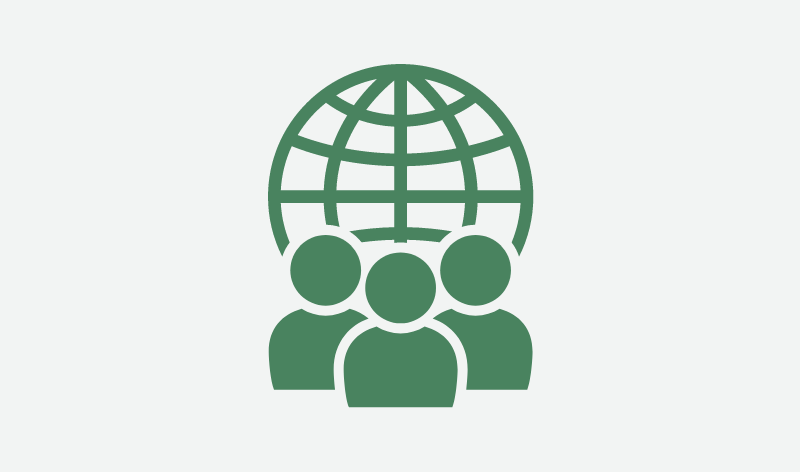 The curriculum also offers basic liberal arts education that is essential for the students to become exemplary members of society and global citizens. Such courses include English Communication I and II and Comprehensive International Practicum in Judo
Therapy and Medical Science, which allow the students to gain well-balanced human character and international skills and develop into versatile professionals that can succeed globally.
The curriculum also offers basic liberal arts education that is essential for the students to become exemplary members of society and global citizens. Such courses include English Communication I and II and Comprehensive International Practicum in Judo
Therapy and Medical Science, which allow the students to gain well-balanced human character and international skills and develop into versatile professionals that can succeed globally.
Department’s academic aim
Learn expertise, techniques, and general knowledge required to become competent judo therapists that thrive in the fields of medicine and sports.
At the Department of Judo Therapy and Medical Science, the students learn not only the advanced expertise and clinical techniques that are required of judo therapists to perform competently at medical institutions and in the sports industry, but also
acquire broader knowledge on the different aspects of healthcare, ranging from anatomy and physiology to basic medicine. As the activities to promote judo therapy around the world have become more robust in recent years, the curriculum also emphasizes
the importance of acquiring proper language skills and cultivating a global mindset, which allows the students to become adept health professionals possessing both a wealth of general knowledge and high moral principles.Sample courses
Let’s become judo therapists!
Judo Therapy Practicum I (shoulder girdle to upper arms)
Key features of this practical course- Learn the essential techniques for examining and stabilizing the shoulder girdle and upper arms affected by injuries.
- Learn practical skills taught by instructors that have professional experience as bonesetters, etc.
- Repetition of practical skill demonstration and skill verification tests allows for the mastery of knowledge and techniques.
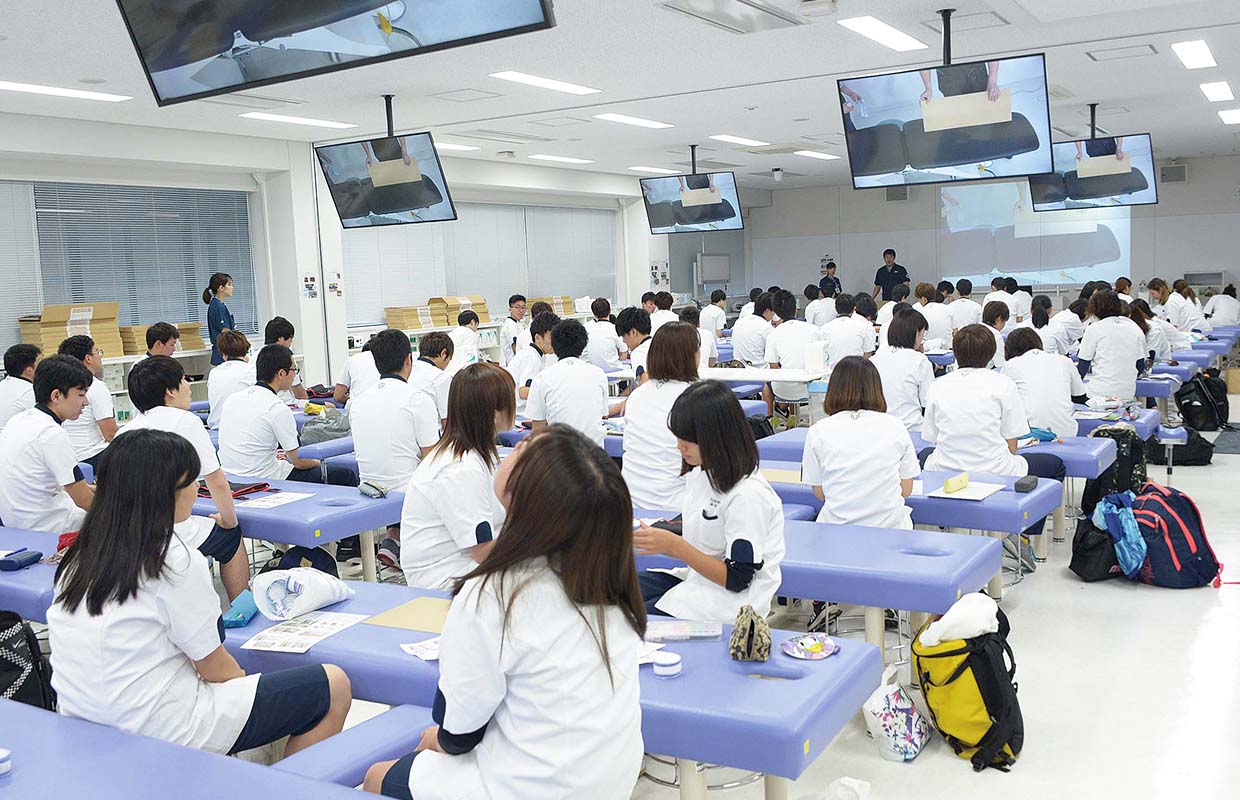
Athletic Rehabilitation Theories
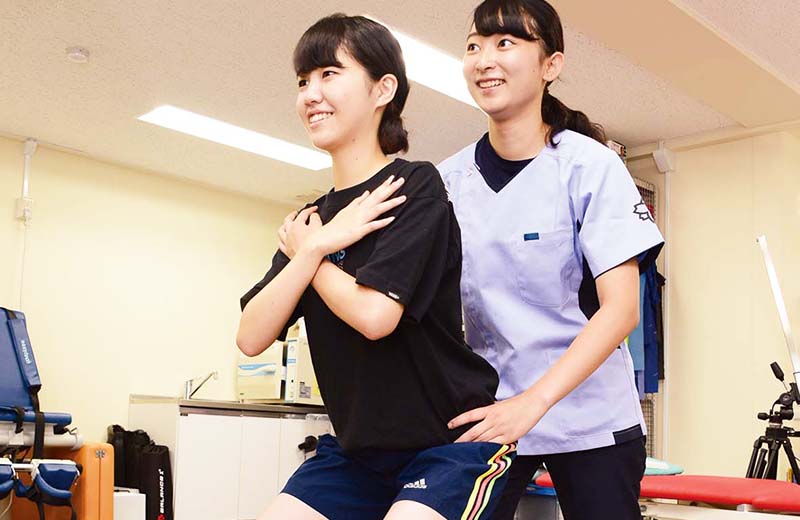 Rehabilitation that allows athletes to return to their competitive activities.
Rehabilitation that allows athletes to return to their competitive activities.
Athletic rehabilitation is the type of rehabilitation whose aim is to help injured athletes regain physical capacity to return to their normal competitive activities. In this course, the students initially learn all the basic definitions and concepts and move onto studying exercising methods specific to various parts of the body and patients’ level of physical ability, as well as methods for preventing recurring injuries and other therapeutic techniques. It provides wide-ranging knowledge and technical skills that are highly useful in the profession of judo therapist.
Soft Tissue Injuries I
(arms and torso)
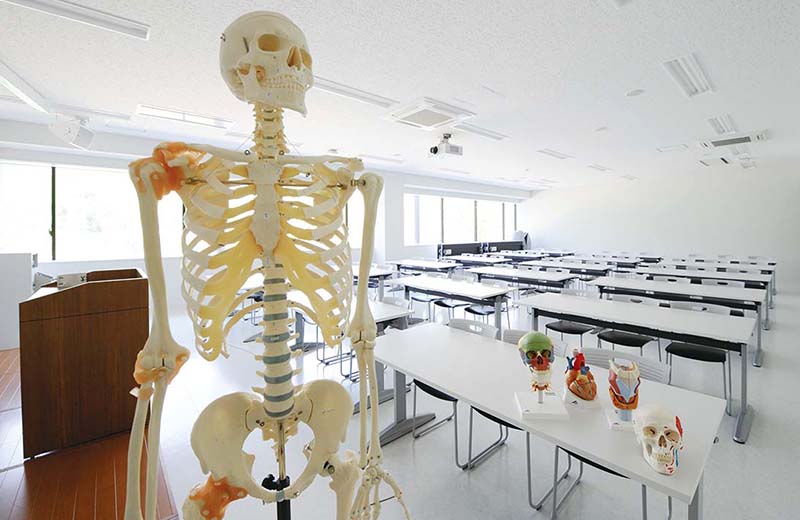 Gain insights into soft tissue injuries in the arms and torso, and learn practical skills to address them.
Gain insights into soft tissue injuries in the arms and torso, and learn practical skills to address them.
This course teaches the students about the characteristics of various soft tissue injuries that occur in the arms and the torso, as well as methods for examining, treating, and preventing them. The students can learn the essential skills for accurately assessing each patient’s medical condition and choosing the correct treatment method, as well as the communication skills they need to accurately discern what each patient’s medical condition must be.
Prevention and Conditioning I (prevention of athletes’ injuries)
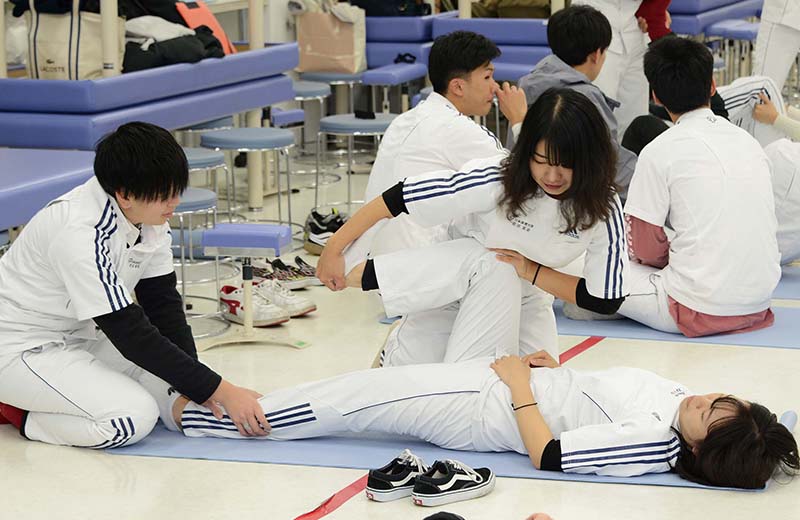 Prevent athletes’ temporary and chronicle injuries and help them reach peak performance.
Prevent athletes’ temporary and chronicle injuries and help them reach peak performance.
In this course, the students first study the basic concept of conditioning, and then engage in a practicum to learn specific knowledge on how to assess and monitor athletes’ condition, and also how to prevent chronic injuries. The goal of this course is for the students to become capable of formulating and implementing conditioning plans optimized for various types and characteristics of athletic competitions.